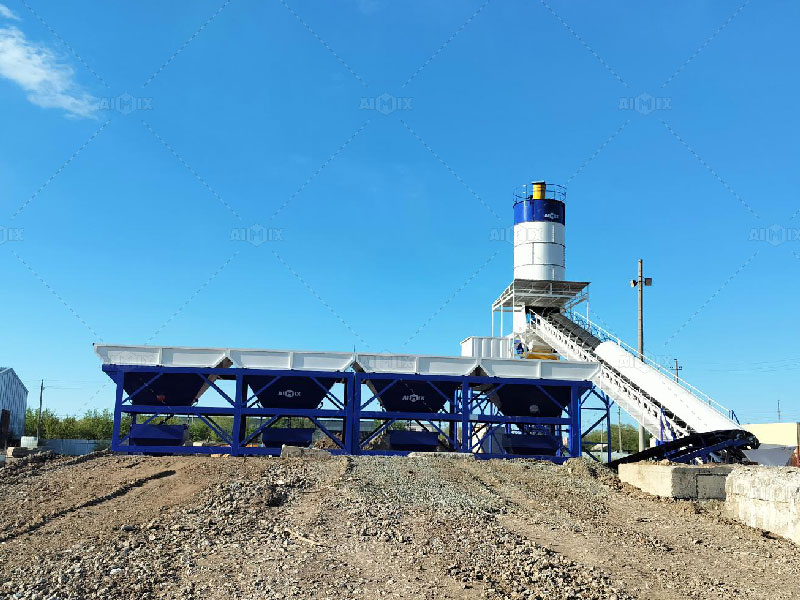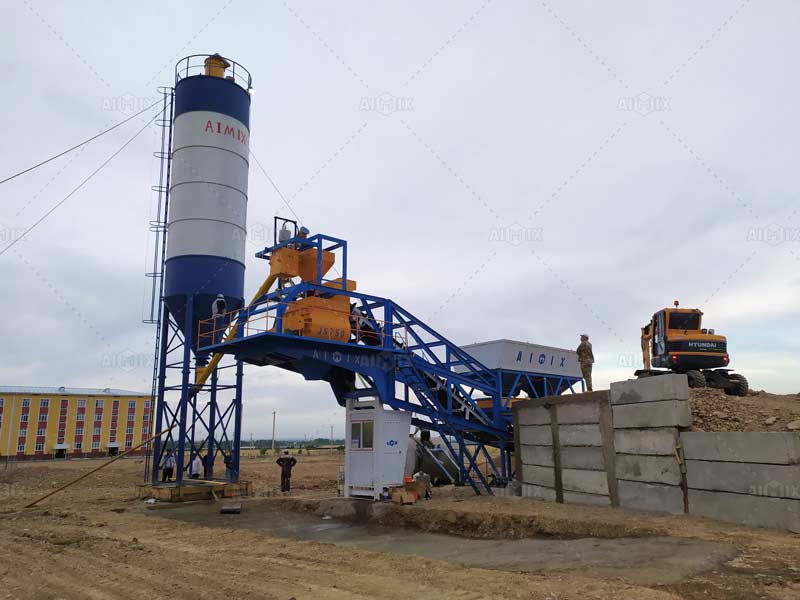Monitoring the performance of your ready-mix concrete plant is essential for maintaining high-quality output and optimizing efficiency. Whether you’re running a stationary or mobile concrete plant, keeping an eye on various performance metrics can help you identify issues early, improve productivity, and ultimately reduce costs. In this article, we’ll explore key indicators to measure and techniques to easily evaluate your plant’s performance.
Why Performance Monitoring Is Crucial for Concrete Plants
A ready-mix concrete plant(planta para concreto premezclado) is a complex operation that requires attention to several factors to ensure consistent and high-quality production. Poor performance can result in material wastage, increased operational costs, and delays in project timelines. Monitoring plant performance helps:
- Ensure product quality: By tracking output quality, you can ensure that the concrete meets the required specifications for each project.
- Improve efficiency: Monitoring performance helps you spot bottlenecks or inefficiencies in your processes, allowing you to streamline production.
- Reduce costs: A well-performing plant uses resources more efficiently, cutting down on material waste and energy consumption.
- Maximize profitability: Higher productivity and reduced waste translate to increased profitability for your operation.

Key Performance Indicators (KPIs) for Ready-Mix Concrete Plants
To effectively measure the performance of your ready-mix concrete plant, you’ll need to focus on a set of Key Performance Indicators (KPIs). These metrics will give you a clear picture of how well your plant is functioning and where improvements can be made.
1. Production Rate
The production rate is one of the most important KPIs for any concrete plant(planta de hormigón Chile). It refers to the amount of concrete your plant produces over a given period, typically measured in cubic meters per hour. A higher production rate indicates that your plant is operating efficiently, while a lower rate may suggest bottlenecks or inefficiencies.
2. Concrete Quality
Ensuring consistent concrete quality is crucial for maintaining customer satisfaction and meeting project requirements. Regularly test your concrete to verify that it meets the necessary strength, consistency, and durability specifications. Poor-quality concrete can lead to project delays and increased costs due to rework.
3. Utilization Rate
Utilization rate refers to the percentage of time your ready-mix concrete plant is operating compared to the total available time. A low utilization rate could indicate downtime due to maintenance, equipment failure, or inefficiencies in scheduling. By increasing utilization, you can boost productivity and reduce costs.
4. Material Efficiency
Material efficiency is a measure of how well your plant uses raw materials like cement, sand, aggregates, and water. Waste reduction should be a priority, as excess material usage can significantly increase production costs. Monitor material consumption closely and look for areas where resources are being wasted.
5. Maintenance Downtime
Unscheduled downtime due to equipment failures or maintenance issues can severely impact plant performance. Keep track of how often your concrete plant is down for repairs and implement a preventive maintenance schedule to minimize disruptions.
Techniques for Monitoring Concrete Plant Performance
Now that you’re familiar with the key performance indicators, let’s dive into some techniques you can use to monitor and assess your ready-mix concrete plant’s performance.
1. Automated Plant Monitoring Systems
Investing in an automated plant monitoring system is one of the most effective ways to track performance metrics in real time. These systems provide detailed data on production rates, material usage, and maintenance schedules, allowing you to identify inefficiencies quickly. Many modern mobile concrete plants(plantas concreto móviles Perú de AIMIX) and stationary plants come equipped with built-in monitoring systems that generate reports and alerts when performance drops below acceptable levels.
2. Regular Quality Control Testing
Conducting regular quality control tests is crucial for maintaining high standards of concrete production. This includes testing for compressive strength, slump, air content, and other important properties. By monitoring quality on an ongoing basis, you can address issues before they escalate into larger problems that affect project timelines and costs.
3. Production Data Analysis
Analyzing production data can help you pinpoint inefficiencies in your concrete plant operations. Look for trends in production rates, material usage, and downtime to identify areas for improvement. For example, if you notice a recurring drop in production during specific times of day, it may indicate a need for better scheduling or equipment upgrades.
4. Maintenance Tracking
Keeping detailed records of maintenance activities is essential for minimizing downtime. A well-maintained plant is more likely to operate efficiently and experience fewer breakdowns. Use a maintenance tracking system to log repairs, replacements, and routine servicing of equipment. This will help you anticipate when certain components may need to be replaced, preventing unexpected failures.
5. Employee Training and Supervision
Even the best equipment can’t compensate for poorly trained staff. Ensure that all employees involved in the operation of the plant are properly trained and knowledgeable about the equipment they are working with. Regular supervision and performance reviews can help identify training gaps and keep your team operating at peak efficiency.

Improving Your Concrete Plant’s Performance
Once you’ve identified areas for improvement, take action to enhance your plant’s performance. Some strategies include:
- Upgrade Equipment: If your current equipment is outdated or causing frequent downtime, consider upgrading to newer models with better efficiency and capacity.
- Implement Preventive Maintenance: A proactive maintenance approach can significantly reduce downtime and extend the life of your equipment.
- Optimize Material Usage: Fine-tune your batching process to ensure that you’re using the right amounts of cement, water, and aggregates for each mix. This will help reduce material waste and improve overall efficiency.
- Adjust Production Schedules: Analyze your production data to determine whether changes to your work schedule could lead to higher utilization rates and better overall performance.
Conclusion
Evaluating and improving the performance of your ready-mix concrete plant doesn’t have to be complicated. By focusing on key metrics like production rates, material efficiency, and maintenance downtime, you can easily assess how well your plant is performing. Implementing monitoring systems, conducting regular quality tests, and making data-driven adjustments will help you maximize efficiency, reduce costs, and ensure consistent, high-quality concrete production. Whether you’re operating a stationary or mobile concrete plant(planta de concreto móvil o estacionaria), taking these steps will lead to better results and a more profitable business.